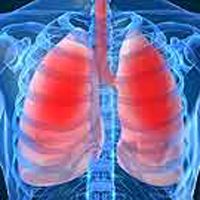Publication
Article
Internal Medicine World Report
New Insights on Cellular Mechanisms Behind Pulmonary Hypertension
Author(s):
Researchers at Yale University have pinpointed the cells and cellular processes that trigger life-threatening pulmonary hypertension, which have been little understood until now.

Researchers at Yale University have pinpointed the cells and cellular processes that trigger life-threatening pulmonary hypertension, which have been little understood until now.
For their study published in the February 2014 issue of Cell Reports, internist Daniel Greif, MD, and colleagues from the Yale School of Medicine investigated the mechanism behind the migration of smooth muscle cells along blood vessels in mouse models of pulmonary hypertension.
The authors explained that excess smooth muscle accumulation is a key component of pulmonary hypertension, in addition to atherosclerosis. Normally, the smallest blood vessels in the lungs lack a muscular coating, but in pulmonary hypertension, the vascular structures in the lungs become muscularized, they noted.
Using genetic tools, the investigators mapped the fate of smooth muscle cells and noticed that smooth muscle coating came from the smooth muscle cells of larger blood vessels. The authors also learned the process through which smooth muscle cells differentiate, migrate to small blood vessels, and then re-differentiate, “thereby muscularizing vessels that normally lack a smooth muscle cell coating,” they wrote.
The researchers said their findings on cell organization within pulmonary arteries will make important contributions to future treatments for patients affected by pulmonary hypertension.
“For the first time, we understand which cells are responsible and the cellular processes underlying their recruitment,” Greif said in a press release. “Now that the culprit cell population in pulmonary hypertension is identified, we can turn our attention to tailoring therapies to target these cells.”





